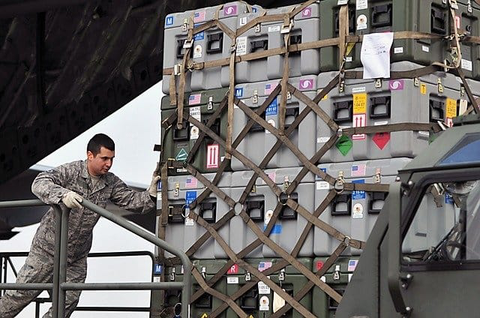
The established way to secure cargo is through the use of cargo nets. However, these are expensive and can be cumbersome to store and carry if all you are doing is securing something to your car roof rack or trailer.
A cheaper way is to use rope or regular tie-down straps, but these take time to use and can be tricky to secure satisfactorily as they quite often come loose when moving.
A better alternative could be to use a multi-functional tie-down strap, like WRAPTIE™, which is not only elasticated for convenience but strong as well. Add to that, is a unique fastening system that makes it a breeze to secure. All of which could makes it the perfect tool for securing your gear.
So What is a tie-down strap?
A tie-down strap is a reusable fastener, usually made from a high strength webbing. The strap normally has some form of metal buckle attached at one end, through which you thread the other end.
Tie-down straps are available in various lengths and strengths. They can be as long as 40 feet, with widths ranging from an inch to 4 inches. The thicker and wider the strap, the heavier the load it can support.
There’s a wide range of tie-down straps available, depending on the usage and weight of the cargo:
1) Tie-down straps or lashing straps
These are the lightweight versions of tie-down straps used for light loads. Typically, they have working loads of 100lbs (50kg) and a breaking strength of 220lbs (100kg) max. (Note that the buckle will slip before the webbing breaks)
They make use of spring-loaded metal buckles to wedge the webbing and prevent it from slipping.

2) Cam buckle straps
Similar to lashing straps but designed for heavier, medium-sized loads weighing up to 1,500lbs (680kg). They often have an additional fastening mechanism to better secure loads.

Image Credit: Lee Parks Design
3) Ratchet straps
Ratchet straps are made to handle the heaviest loads, with a working load limit up to 5,000lbs (2200kg). They’re called as such because of the ratcheting mechanism that helps tightly secure large loads.

Image Credit: Rakuten
4) Winch straps
Unlike other strap types, a winch strap has only one end with a built-in buckle. The other end of the strap is free from any buckle and directly feeds into a winch system that is usually installed permanently on the truck or trailer.
To secure the load, the buckled end is secured to an anchor point and then the winch system is used to tighten down the strap.
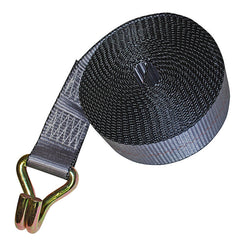
Image Credit: Shippers Supplies
Alternatives to Tie Down Straps
For lighter loads less than 110 lbs (50kg), it makes sense to use a regular tie-down strap. After all, they are cheap and easy to use!
But there are disadvantages that make using these types of straps a real pain. First, the metal buckle. That is going to damage your gear or your truck if you are not careful. Also, because webbing is not elasticated, your gear may shake free, unless you tie it down real tight. Too tight though and you may end up damaging your equipment!
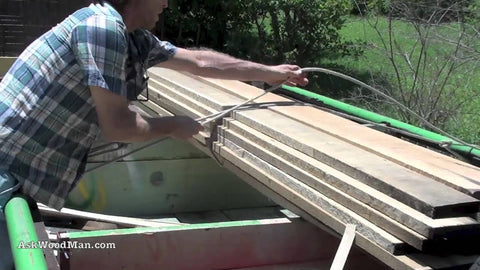
Image Credit: AskWoodMan
And finally, what about the left-over webbing? Sometimes as much as 4 m of webbing is left over and needs to be stowed before you can drive away.
Ropes, bungee cords, tarps, and cargo nets can also be used for tying loads.
Ropes are effective but they require experience to tie proper knots, especially for securing heavy loads.
Bungee cords are good shock absorbers, but dangerous to use as they have no load rating and could snap at any time!
Tarps are also great for protecting cargos against elements but can be hard to set up because of their size and are always difficult to store away after use.
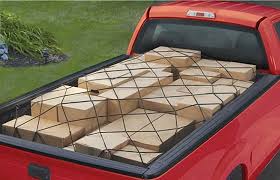
Cargo nets can also be used as an alternative to tarps, but they’re rough and thick that they may scratch the plastic or paint on cargos.
There is also a new type of tie-down straps called a WRAPTIE™ which offers a better alternative. With its industrial strength elasticated webbing and a unique fastening system, WRAPTIE™ seems to have found a way to secure your load without any of the disadvantages of the other systems.
Narrowing down your selection of tie-down straps
With so many types of tie-down straps available in the market, you may think about grabbing just anything since they look fairly similar. However, there are factors to consider in selecting the right tie strap:
1) Breaking strength
First, is the breaking strength is the amount of weight or tension that will cause the strap to fail or break. It’s determined using the weakest point of the strap.
If the webbing has a break strength of 2,000lbs, while the end fittings are rated only at 1,500lbs, the overall break strength of the strap is determined at 1,500lbs.
The WLL refers to the amount of load the strap can safely handle. The WLL is always measured at 1/3 of the overall break strength of the strap. This means that a strap with a break strength of 15,000lbs will have a WLL of 5,000lbs.
Make sure the WLL of the tie-down strap is higher than the weight of the load to ensure safety. It’s recommended to use straps in pairs as an added security measure.
3) Length
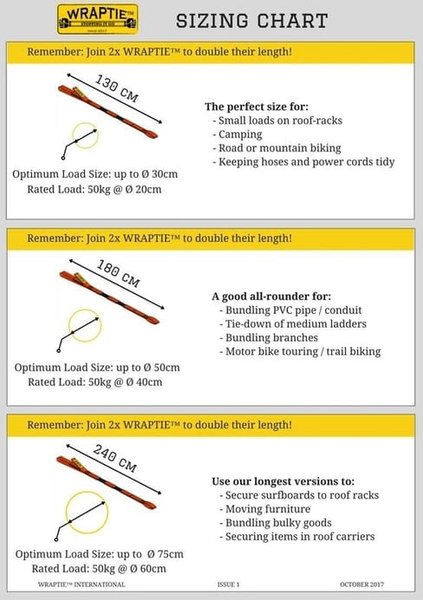
Tie-down straps can vary in length and can reach up to several feet. It can be hard to purchase a strap with an exact length, which is why you should look for those with built-in solutions to tie up excess strap ends. Some have retractable ratchet straps, wrappers, and Velcro fasteners.
4) Tightening mechanism
The most basic types are the lashing and cam buckle straps which use angled teeth or other locking mechanisms to secure the load. There’s a variety with a toothless mechanism to prevent the wearing of the strap. This is often used in tying down ATVs, motorcycles, and other light to medium cargos.
Ratchet mechanisms, on the other hand, make tightening the strap faster and easier. Ratchet straps are excellent for medium to heavy loads that need a more secure fastening system.
If you need a heavy-duty tie-down strap, select one that has a winch. Winch straps are often used in the trucking industry because of their reliability and durability.
Of all the tie-down straps available in the market, WRAPTIE™ is the easiest and most convenient to use for light loads. It uses a unique fastening system to secure the cargo and avoid loose ends from flapping. With WRAPTIE™, there’s no need to learn about rope knots or to fumble with clamps and tightening mechanisms.
What is WRAPTIE™?
WRAPTIE™ is a multi-purpose tie-down strap that utilizes an innovative loop fastening system for easier strapping. It doesn’t have hooks that can scratch your cargo in any way. With its tightening mechanism, you won’t have to worry about where to place the loose ends.
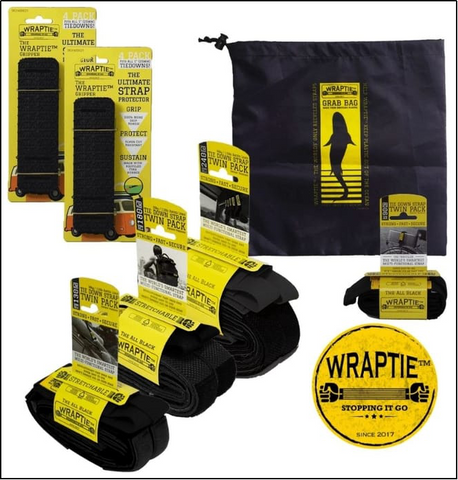
A WRAPTIE™ can quickly secure up to 100-lb (50kg) load, which is perfect for carrying small bags, cargos, and light equipment. It’s available in different lengths and can be bought in packages for a more affordable price.
All WRAPTIE™ products are tested in the Australian outback and certified by the National Association of Testing Authorities (NATA). These unique tie-down straps are made with industrial-grade, rust-free materials.
If you need a reliable, versatile, inexpensive, environment-friendly, and hassle-free tie-down wrap, get a WRAPTIE™. Shop from our collection of tie-down straps and accessories or contact us if you have any questions about our products.
Leave a comment
Comments will be approved before showing up.
Also in The WRAPTIE™ Blog


Bicycle Touring Across Taiwan


8 Sustainable Travel Tips To Adopt As A Habit










Mark Blackburn
Author